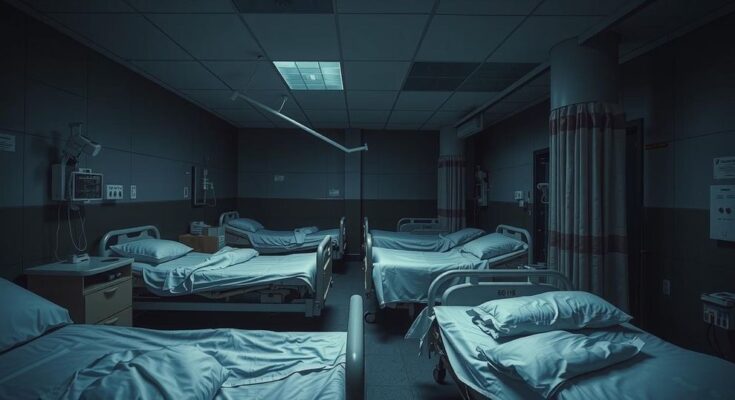Civilian casualties in South Sudan rise as fighting intensifies between the army and local militias. Hospitals report a growing number of wounded, including women and children, amid government offensives and airstrikes. The UN warns of escalating violence potentially leading to civil war, with many civilians displaced and living in fear.
Civilian injuries and deaths have surged in South Sudan due to ongoing clashes between the national army and local militias. Victims like Wiyuach Makuach are suffering dire consequences, with Makuach losing her arm in an airstrike while visiting a hospital in Fangak for her son’s tuberculosis treatment. A series of bombings there resulted in the deaths of seven individuals at the Doctors Without Borders facility, highlighting the peril facing civilians in conflict zones.
Makuach’s experience is not unique; numerous civilians have reported similar tragic encounters as the South Sudanese army continues to engage militia groups across the nation. The army maintains that its operations target combatants and has not publicly addressed the rising civilian toll. Young men are often the initial casualties in these skirmishes, though recent weeks have seen an uptick in women and children among the wounded.
The situation has prompted urgent warnings from the United Nations about a potential return to civil war. Amidst the escalating violence, there are complicated legal battles underway involving the U.S. administration’s decision to send deportees back to South Sudan, further complicating an already tense situation.
Many of the injured have been receiving treatment at a makeshift facility in Akobo, set up by the International Committee of the Red Cross. This temporary surgical response is overwhelmed as surgical staff struggle against logistical barriers in delivering care. Dr. Bjarte Andersen, a surgeon with ICRC, revealed that they have faced dire scenarios, including patients dying while awaiting transport. He pointed out that critically injured cases often cannot be relocated, diminishing their chances of survival.
The casualty count includes teenagers such as Kuaynin Bol, a 15-year-old boy gravely injured by an attack at home, requiring multiple surgeries. Tensions, especially in northern Jonglei State, have escalated dramatically since a militia made a strategic attack on a military barracks in March. This act caused the government to arrest key opposition figures and call in Ugandan military support to augment their offensive against opposition groups and local militias.
Evidence of modern warfare tactics has surfaced, with reports of improvised incendiary weapons employed in these offensives leading to significant civilian casualties. Recent violence in Fangak, which had previously been relatively peaceful, resulted in notable civilian loss, with local testimonies reporting at least 12 fatalities, including children, in a May bombing.
The government’s response to these reports has been elusive. Army spokesman General Lul Ruai Koang refrained from discussing ongoing operations, indicating a widespread reluctance to acknowledge the humanitarian impact of the violence. As tensions continue, civilians are living under constant threat and fear, some fleeing into woods to avoid attacks.
William Nyuon, a local resident, encapsulated the dire mood in Fangak, saying, “The people here are moving all the time, just during the night. They fear the plane will come and bomb them again.” The humanitarian situation remains grim as the fighting fuels a cycle of trauma and displacement in a region already battered by economic and environmental hardships.
In summary, South Sudan is witnessing a tragic escalation in civilian casualties resulting from mounting conflicts between the army and local militias. Reports of airstrikes targeting communities are high, with numerous innocent lives lost or forever changed. The response from the government regarding these incidents remains ambiguous while the situation for civilians further deteriorates, with humanitarian concerns taking center stage amid an already precarious landscape of health and security difficulties.
Original Source: www.ivpressonline.com




